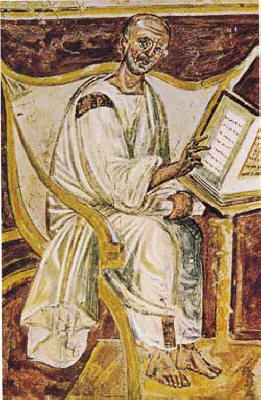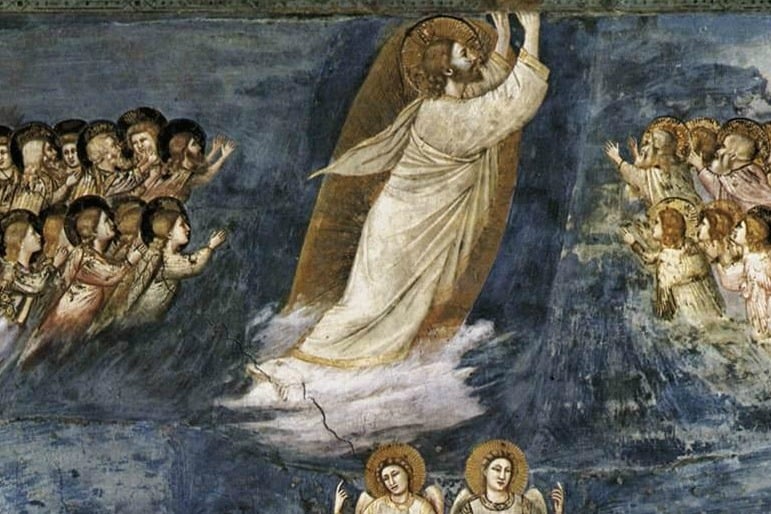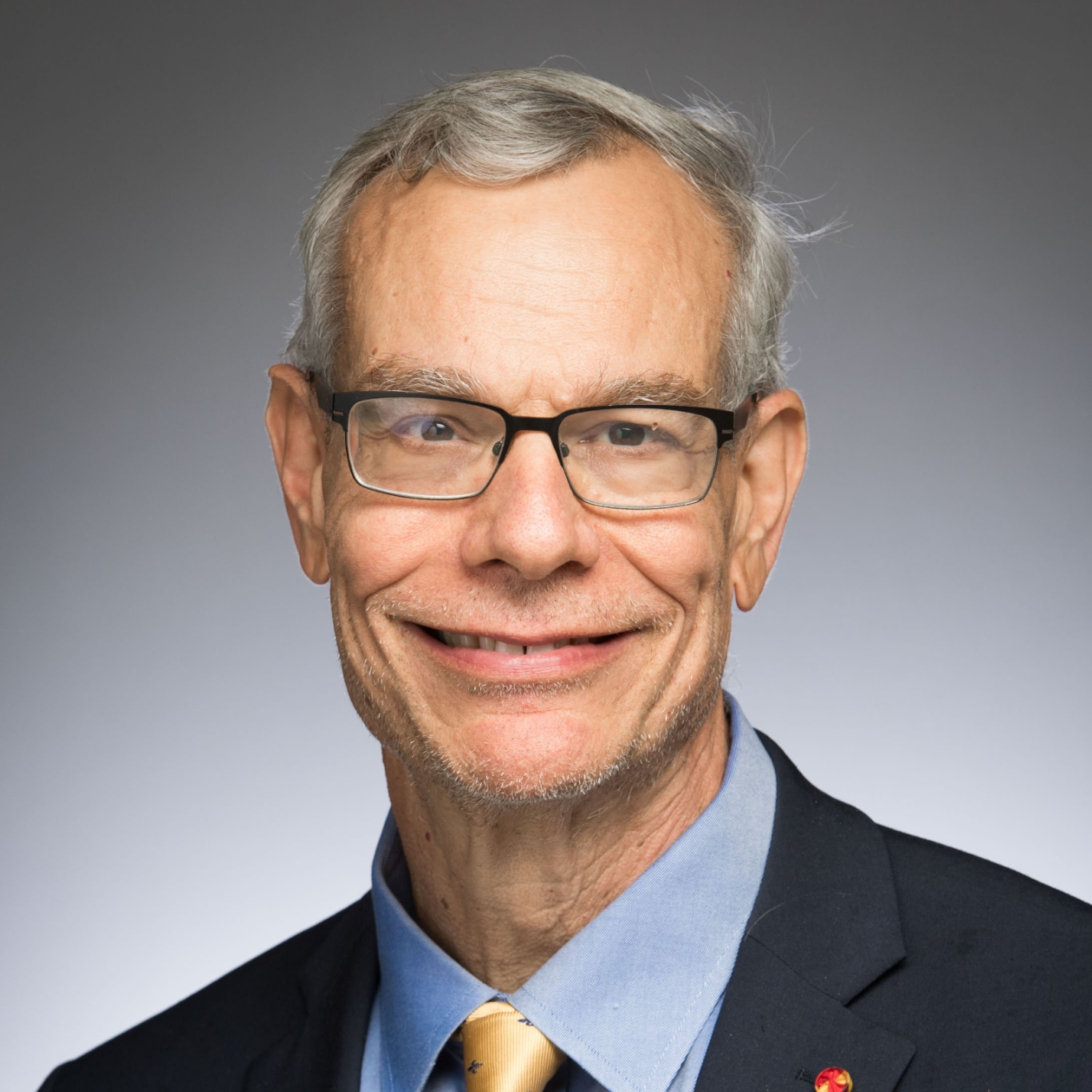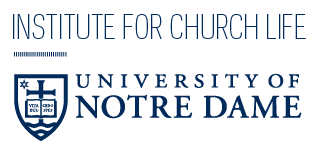Did you ever wonder how the Apostle Paul might have been evangelized? He gives us a hint in a famous passage in 1 Corinthians 15:
For I delivered to you as of first importance what I also received, that Christ died for our sins in accordance with the scriptures, that he was buried, that he was raised on the third day in accordance with the scriptures, and that he appeared to Cephas, then to the twelve. (1 Cor 15:3–5)
Paul here talks about what he “received”—you might say, the “information,” the basics of the Christian proclamation. As he says, he also “delivered” this or “handed it down” to the Corinthians in evangelizing or catechizing them in turn. This little catechetical formula is the basis for Paul’s long reflection and exhortation in 1 Corinthians 15 regarding the resurrection of the dead. Faith in Christ’s Resurrection implies hope for a resurrection of our own, for Christ is the “first fruits of those who have fallen asleep” (1 Cor 15:20). After reflecting with them on the hope implied in the message he had both received and delivered, he exhorts them to live in a spirit formed by this hope: “Therefore my beloved . . ., be steadfast, immovable, always abounding in the work of the Lord, knowing that in the Lord your labor is not in vain” (1 Cor 15:58).
What is interesting to me about this passage is that, in a way, the “information” IS the “formation.” The “information” is formative. It is not just a set of facts, useful to know for lulls in 1st century conversations. The Christian message, summed up in this little formula, implies a formation for those who believe it.
There is an interesting passage in the first letter of St. Paul to the Thessalonians which illustrates the same dynamic. Have you ever wondered what Paul might have said to a community which had never heard the Gospel proclaimed and which had never even heard of the one God of the Jews? We get a glimpse at what Paul might have proclaimed in his earliest surviving letter:
For they themselves report concerning us what a welcome we had among you, and how you turned to God from idols, to serve a living and true God, and to wait for his Son from heaven, whom he raised from the dead, Jesus who delivers us from the wrath to come. (1 Thess 1:9–10)
Paul, it seems, had to start with the most elementary of Christian truths, the existence of the One God and the falseness of the idols, and also the unique relation to this God of Jesus as “his Son.” This Jesus was raised from the dead, and is to come again from heaven. There is a lot of what we might call basic “information” in this message, but once again I am struck by how “formative” it is to be “informed” with this message. In this passage, the formation that results from the “information” is folded right into an account of the “information” itself. How do the Thessalonians behave now that they have been evangelized or catechized by Paul’s message? They have “turned to God” from the worship of idols; they now “serve” the living and true God; and they live in hope, “waiting” for the Son of God, who is Jesus, to come again. They are a people “formed” in hope, a people whose service of God constitutes a “waiting” for the coming of the Lord. In this passage, Paul can’t even give the message he taught, the “information” about the faith, except by remarking on the “formation” of the Thessalonians in response to the “information” they received in his earliest preaching to them. To know and to believe what is contained in the basic proclamation of the faith is to be formed by that proclamation. “Information” implies or contains “formation.”
The relationship between information and formation is a point I made in the first issue of Church Life: A Journal for the New Evangelization, when I analyzed Augustine’s sermon 212 on the handing over the Creed. I concluded that Augustine’s attention to the information of the Creed means that the way that other people should “read” the Creed is to see the way in which it changes the identity or character of the person who has received it. The Creed, Augustine has explained, proclaims the unimaginably great love of God in Christ, so great that something truly unimaginable has happened, the Almighty has put himself into solidarity with our weakness and chosen to be, as a human being, vulnerable to all that we are vulnerable—false testimony, injustice, suffering death. Write this on your hearts, Augustine is saying: be formed by this love so that when people see you, they will see in practice the love, the pearl of great price, which the Creed talks about.
The question remains, if the “information” of the Christian proclamation IS in some way a formation, and if the “formation” of Christians is carried out in imparting “information,” is there any difference?
The answer to that question must be, of course, yes. In Sermon 212 of St. Augustine (as I noted in the last issue), the fact is, the Creed is not just handed over, plunked down, and left to somehow inscribe itself on the hearts of the catechumens. It is handed over with an explanation, in a homily, at Mass, and there is the support group of catechists acting in concert with the Bishop’s explanations.
But, as the General Directory for Catechesis points out, the various tasks of catechesis—and mutatis mutandis of teaching religion in secondary schools or even theology in college—“are interdependent and develop together. Each great catechetical theme—catechesis of God the Father, for example—has a cognitive dimension as well as moral implications” (GDC §87). The task of “informing” is NOT independent of the other tasks relating to formation.
 |
| St. Augustine (6th c.); courtesy Wikimedia Commons |
We can see this interdependence in the example given from Augustine’s sermon 212. In this sermon, Augustine offers fairly precise information about the doctrines proclaimed in the Creed. But he tries very hard to draw out the formative implications of the information. With the image of the Creed written on the heart, he tells the catechumens that these teachings are formative: He explains why it is important to believe in the equality of the Son with the Father. It’s not just a piece of information, just another interesting fact about the cosmos in a catalogue of interesting facts: giraffes have long necks; the earth is 93 million miles from the sun; Indianapolis is the capital of Indiana; and the Son is equal to the Father. Or, to put it into the words of a poem a student in a history of doctrine class once wrote for me: “Roses are Red; Violets are Blue; the Son is equal to the Father; and the Holy Spirit is too.”
The “information” IS the “formation.” The “information” is formative. It is not just a set of facts, useful to know for lulls in 1st century conversations. The Christian message, summed up in this little formula, implies a formation for those who believe it.
In the case of Augustine’s sermon, he explains why it’s important to believe that the Son is equal to the Father—because it means that the “One who suffered under Pontius Pilate” is God the All Powerful become weak out of Love. Unless you believe that the Son is equal to the Father, you won’t see this Love—but that is the very thing that makes this doctrine formative to our hearts. Augustine in his sermon makes sure the catechumens see the “pearl of great price” which the doctrine contains.
The doctrine has no value apart from its function of “carrying” this mystery of divine Love so that it can be handed on—so that this handing on or “tradition” may develop and continue. In a way, a doctrine of the faith is like a carrying case, a little suitcase, for Mystery. Doctrines are the normative way of handing on a mystery—they make it so we can pick mysteries up and carry them around and hand them to someone else and know we are handing on this mystery and not some substitute. But in order to hand it on properly the person has to know it contains a mystery, has to have it opened up so that receiving a doctrine means encountering the mystery it carries so that one can be transformed by it. In order to hand on the mystery you have to grasp on to the handles—the normative language of the doctrine—otherwise it’s untouchable—unspeakable—ineffable and therefore has no power to transform those who must hear and be touched in order to believe. But you can’t stop at the handles or you simply end up with mystification, a new intellectual puzzle (“3 in 1”), not transformation.
Here is another example: the doctrine of Christ according to Chalcedon: two natures, divine and human, in one person. There’s a conversation stopper. If you are ever in a conversation that’s getting too interesting, just mention: “Did you know that according to Catholic doctrine Christ has two natures, divine and human, in his one Person?” and people will immediately start yawning and say, “Oh, like Breathmints!” as a student once said to me, “Two mints in one!” If you stop there, it seems like just another curious bit of information about the world, isolated and random as is the recipe for Certs. Why aren’t there just as easily five natures in 2 ½ persons in Christ?
 |
| Photo: John Perivolaris; CC-BY-NC-ND-2.0. |
One has to take the time to open up the carrying case. Why do we talk this way? Because otherwise we aren’t handing on the full and complete mystery of God’s Love in Christ. If Jesus is not fully divine then what is revealed? That God is too busy to come to save us, can’t quite fit it into the divine corporate time? That God is reluctant or wary, that God doesn’t care enough to come personally? If Jesus is not fully human, then God hasn’t really emptied himself quite far enough for it to matter to me. What would be revealed is God’s reluctance to get fully involved. The Immortal and Almighty truly does not have to suffer, so why go to that great length? Why not just take a tip from the Greek gods and goddesses—they know how to appear human without going overboard. Appear on the battlefield in the Illiad, acquire a little fame, help out your favorite warrior and then go back to Olympus, no muss, no fuss. God should have consulted a more expensive vocational counselor who could have steered him away from something as drastic as the Incarnation. Fully divine—fully human—means God, the real God, enters into solidarity with our condition fully and exactly as we know it, without special escape clauses. He enters into solidarity with us, and not even under the conditions he originally created us but under the conditions of the mess we have made of things, a condition in which telling the truth can get you killed and betraying someone falsely can get you paid. Without sinning himself, the “Almighty becomes weak” as we know weakness and vulnerability, in this world where vulnerability is almost always exploited to the full.
Athena and Ares were too smart to get too involved in such a mess. No self-respecting deity really would. But the real God does, without reservation, emptying himself and declaring his radical solidarity with us unto the point of identification, as one of us. It reveals God’s foolishness—“but the foolishness of God is wiser than human wisdom” (1 Cor 1:25). The Incarnation is the sheer foolishness of pure and true love without the slightest hint of self-interest, an utterly generous act of solidarity and compassion. To know that Jesus is fully divine and fully human is not to know just another nifty atom of cosmic information but to know an unimaginably deep mystery, the mystery of God’s unreserved absolutely unconditional love for us. It’s “information” which is formative, which is transformative. It is the way we “handle” and “hand on” the mystery of this profligate love, the love of God in Christ.
The teaching of doctrine often gets a bad name because we conceive of it not as the handing on of formative mysteries, but as simply informative, as merely informational. How often have you heard the phrase, “we have to get beyond the ‘mere’ teaching of doctrine”? In other words, to the real stuff, the experience, relevance, etc. The hidden premise behind this sentence is that doctrine is mere information and not in some way itself formation. What I say is, we have to get beyond the teaching of doctrine as though it were mere information. Treating doctrine as though it were mere information is like treating the following sentence as mere information: “This man you are seeing dead by the roadside saved your life but it cost him his own.” That’s not just a factoid to file away with the rest of one’s collection of facts, but information that could form the whole way you look at your life from then on.
In my opinion, we need to recover or recreate a way of teaching Christian doctrine that, as Bishop Augustine showed, grants “access” to it by bring out its formative dimension. Nor is it as difficult as it seems at first. Aren’t all the basic doctrines of the Church, those high up in the “hierarchy of truths,” doctrines of the divine Love? The doctrine of creation, of the Trinity, of the Incarnation, of the Holy Spirit, the Church and the communion of saints: these are all in some way attempts to express and specify the central mysteries of God’s love. Otherwise, they would not be worth teaching.
We have to get beyond the teaching of doctrine as though it were mere information.
My own view is that the teaching of doctrine has somehow come unglued from integration with the other formational tasks of catechesis and religious education. This has happened, in my view, principally because we are still in the midst of a transition that began at Vatican II. Listen to this passage from the Dogmatic Constitution on Revelation, Dei Verbum:
It pleased God, in his goodness and wisdom, to reveal himself and to make known the mystery of his will (see Eph 1:9), which was that people can draw near to the Father, through Christ, the Word made flesh, in the Holy Spirit, and thus become sharers in the divine nature (see Eph 2:18; 2 Pet 1:4). By this revelation, then, the invisible God (see Col 1:15; 1 Tim 1:17), from the fullness of his love, addresses men and women as his friends (see Ex 33:11; Jn 15:14–15), and lives among them (see Bar 3:38), in order to invite and receive them into his own company. The pattern of this revelation unfolds through deeds and words which are intrinsically connected: the works performed by God in the history of salvation show forth and confirm the doctrine and realities signified by the words: the words, for their part, proclaim the works, and bring to light the mystery they contain. The most intimate truth thus revealed about God and human salvation shines forth for us in Christ, who is himself both the mediator and the sum total of revelation. (§2)
For the Second Vatican Council, revelation was not conceived primarily as it was in the First Vatican Council and earlier conciliar literature, as first and foremost the revelation of certain first principles or propositions from which a theological “science” could be constructed (though it was still that), but rather first and foremost a Person, Jesus Christ himself, the “sum total of revelation.” Revelation is a making known of a mystery, that of God’s will or saving love, an invitation into a friendship hitherto unimaginable. The “words,” that is, the teaching or “doctrine,” and the deeds or acts of God are connected, and in fact inseparably together form one revelation. Dei Verbum makes the attempt to put back together the doctrines and the mystery of God’s inviting love that they proclaim but do not exhaust.
Perhaps in the wake of Vatican II and its own invitation to put these back together, we have been working primarily on the second half—reinstating the invitational, more experiential, part of revelation in our teaching. Perhaps, weary of a teaching of doctrine practiced simply as the imparting of information without many connections to the formative dimension of that information, we tried so hard to recover the latter that we neglected, unintentionally, the former.
When Vatican II came, perhaps the teaching of doctrine largely dripped away because it had been practiced so long as the delivery of mere information and so it was left behind for the more relevant tasks of “formation”? I am not sure; but I think there must necessarily be for a slow way forward through a period of transition in which we create a pedagogy which does not continue the very thing the Council was trying to avoid; namely, the separation of “doctrine” from invitation to transformation, only now from the side of the invitation to transformation. It does not surprise me that it would take several generations to absorb this challenge and respond to it fully. Nor is it an accident that we have found in St. Augustine’s sermons a precedent for the reintegration of formation and information, because the Second Vatican Council itself returned to patristic styles of theology and preaching as a model for its own way of teaching and working.
If we lose our sense of what we are being formed into, we will lose our ability to form altogether.
You might ask why I am concerned about this. Hasn’t the catechesis and religious and theological education of the last forty years been effective? I have to say half of me is tempted to say “NO!” due to the rampant religious illiteracy that is everywhere evident among young people and even among their parents. But the other half of me would resist my temptation to say no with an awareness of the huge difference in ecclesial vitality between this country, for example, and European countries such as Great Britain and Italy and even Ireland where secularism is rapidly emptying the churches. Perhaps, because doctrine is still taught there in a way that its character is formative was not emphasized, more or less a continuity with pre-Vatican II formation. So we must have been doing something right. The emphasis on formation, on making sure the faith is rooted in people’s lived experience and in shaping that experience according to ecclesial practice, seems to have been successful.
But if for whatever historical reasons, our formation has been carried out largely apart from “information,” how much longer can it succeed in this way? Ignorance and confusion about basic Christian doctrines is widespread, even shocking. It would be exaggerating to say that many college students have never heard the word “incarnation” except with the prefix “re-“ in front of it, but not by much. And if these students are presumably among the best educated of younger Catholics, where are the rest of Catholic youth in this regard? How long can you keep handing on something when you don’t know what it is you are handing on? You might say, well, the essence of the Christian religion is to love one’s neighbor, but how long can one go on doing that if one does not know why we are supposed to love the neighbor? Whether we like the neighbor or not, whether the neighbor is attractive or not. . . . In some cases it’s hard to love the neighbor, and very unattractive.
It costs one to help the poor, and you can indeed be killed in this world for speaking the truth about your neighbor’s rights. Why would we? Because God became our neighbor in Christ—fully divine and fully human—because we are formed into that Love, not a vague altruistic sentiment or a political ideology. The more that mystery recedes from memory, from articulation, from the effective awareness of educated Catholics, the more the reasons for radical solidarity with the neighbor become hazy, and so harder to pass on. Why are we pro-life? Because, among other things, God became a neighbor to us at every stage of life, including that of a crying newborn baby and all the stages preceding, as well as that of a criminal condemned to capital punishment. In the long run, if we lose our sense of what we are being formed into, we will lose our ability to form altogether. Students become hungry for substance and if they find none, they turn elsewhere, to ideology, secularism, fundamentalism, or rank sentiment.
So I believe it is time to redouble our efforts, already underway, to reintegrate the teaching of doctrine back into the rest of the catechetical and religious education tasks. And it is there waiting to be reintegrated because it is not simply a “cognitive” informational task without formational impact, as I have tried to explain. It is a forming of the intellect and the imagination and heart according to the vast contoured landscape of the immensity of God’s love. As the GDC puts it, “Secure possession of the language of the faith is an indispensable condition for living that same faith” (GDC §154). The language of the faith is formative of life and if we lose this language we will also lose the life it both forms and informs.
This doesn’t mean that every student has to get a doctorate in theology or even an undergraduate major. But it does mean two things: the first is simply recovering a sense of doctrine as not just information, as not “merely” doctrine. Just doing that goes a long way. Recovering the sense of doctrine as the handing on of formative mystery already goes a long way towards completing our response to the challenge of Dei Verbum and other conciliar documents. The second is not to be impatient, not to beat ourselves up as teachers and catechists on various levels if it doesn’t seem to work right away or always. But I believe we will have already accomplished something in pressing forward with the transition after Vatican II just by reviving the renewing a culture of teaching doctrine. As I learned from teaching Confirmation class over the years, a little goes a long way. An imagination formed into the mystery of doctrine holds the basis, the foundation, to do more, to be “confessed and made progress in” as Augustine puts it—the basis and foundation for lifelong learning of the Faith.
![]()
Editors’ Note: This essay originally appeared in Church Life: A Journal for the New Evangelization, volume 1, issue 2.
Featured Image: Giotto di Bondone (1266–1337); Scenes from the Life of Christ: Ascension, detail (1304–06); courtesy Wikimedia Commons.



